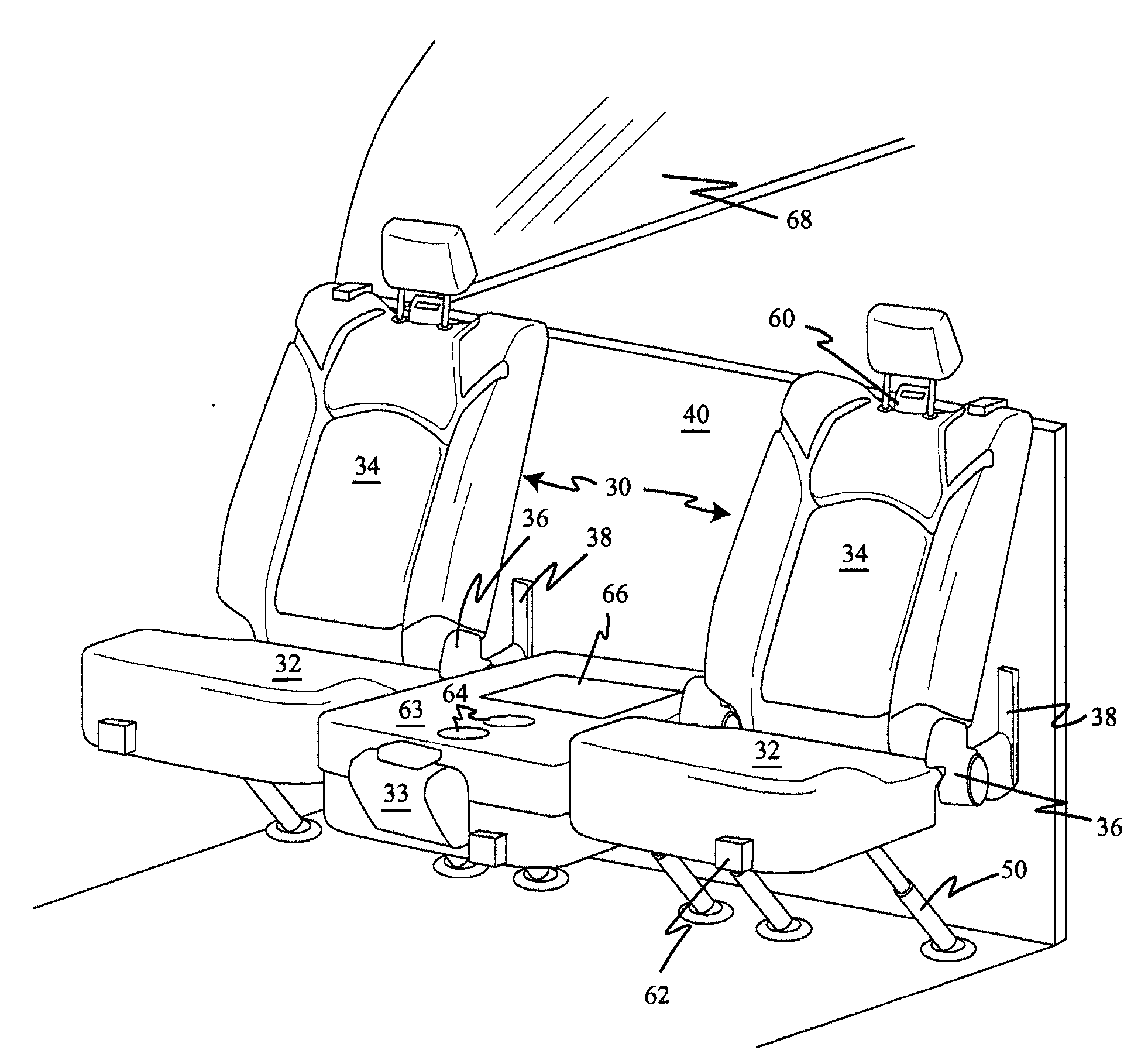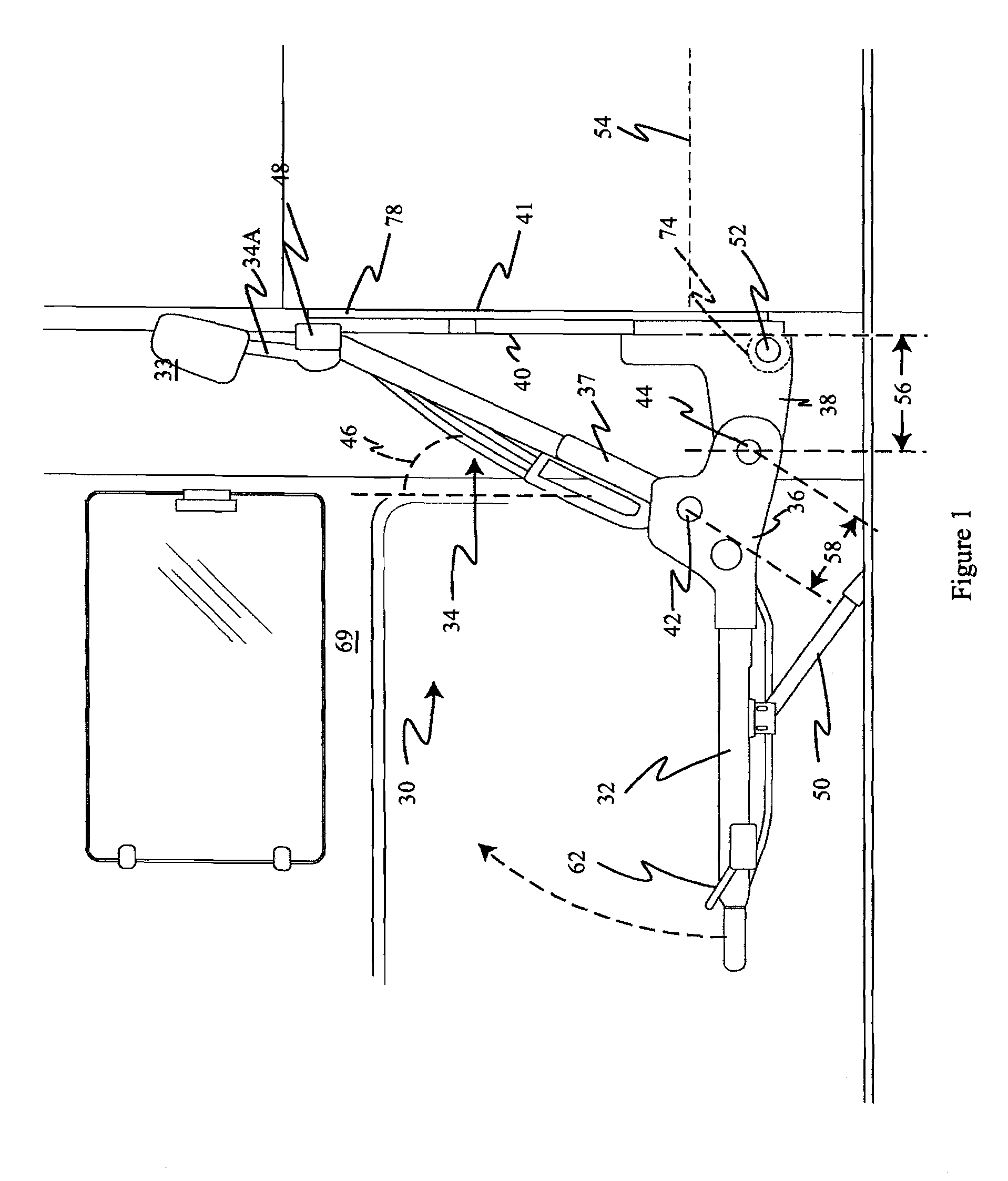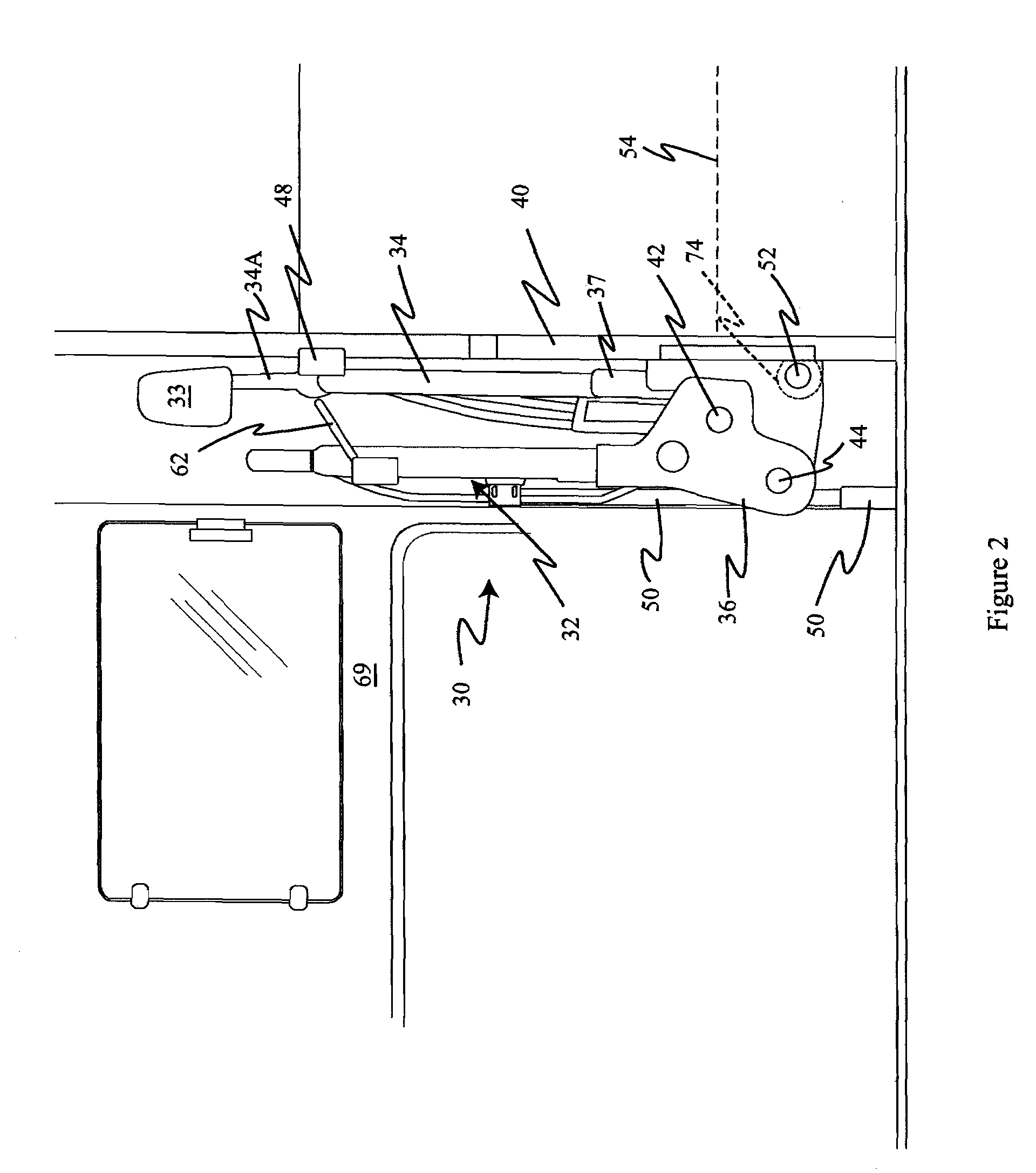Fold Flat Seating
a flat seating and seat technology, applied in the field of vehicle folding seats, can solve the problems of cargo vehicles having second, third or other multiple row seating units, cargo vehicles that have multiple row seats, and are too long for the truck bed,
- Summary
- Abstract
- Description
- Claims
- Application Information
AI Technical Summary
Problems solved by technology
Method used
Image
Examples
Embodiment Construction
[0077]The following description of the preferred embodiment(s) is merely exemplary in nature and is in no way intended to limit the invention, its application, or uses.
[0078]With reference to the figures, and initially FIG. 1, a stadium style fold down seat, generally designated 30 is constructed in accordance with the invention and includes a seat base 32, a seat back 34, a seat bracket 37 pivotally connected to an intermediate bracket 36, and a support bracket 38. It is to be understood throughout the following discussion that there may be multiple seats 30 disposed within the same vehicle V and, while ordinarily each seat 30 within a vehicle will be the same as the others, there may optionally be variations among them.
[0079]In the seat shown in FIGS. 1 and 2, seat base 32 is fixedly attached to seat bracket 37. Seat back 34 is hingedly (or “pivotally”) attached at a first hinge point 42 by seat bracket 37 to intermediate bracket 36. Seat back 34 is attached to intermediate 36 pre...
PUM
 Login to View More
Login to View More Abstract
Description
Claims
Application Information
 Login to View More
Login to View More - R&D
- Intellectual Property
- Life Sciences
- Materials
- Tech Scout
- Unparalleled Data Quality
- Higher Quality Content
- 60% Fewer Hallucinations
Browse by: Latest US Patents, China's latest patents, Technical Efficacy Thesaurus, Application Domain, Technology Topic, Popular Technical Reports.
© 2025 PatSnap. All rights reserved.Legal|Privacy policy|Modern Slavery Act Transparency Statement|Sitemap|About US| Contact US: help@patsnap.com



